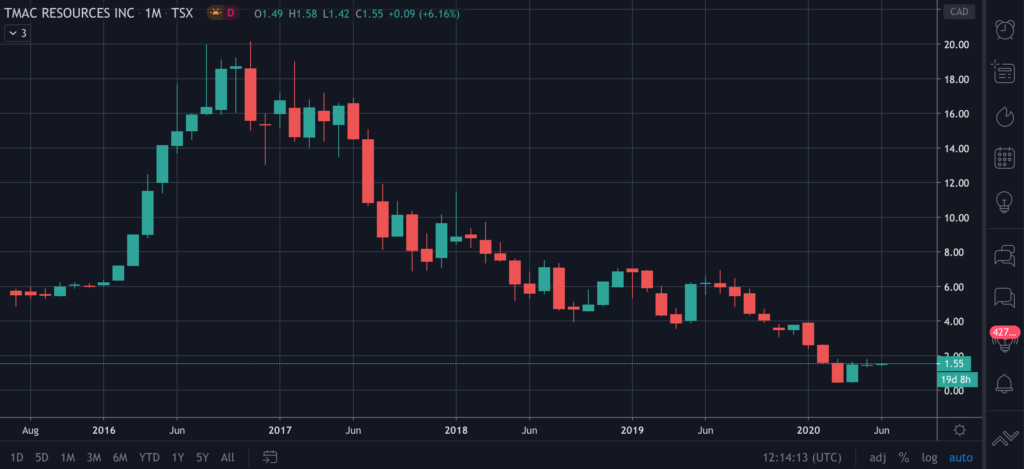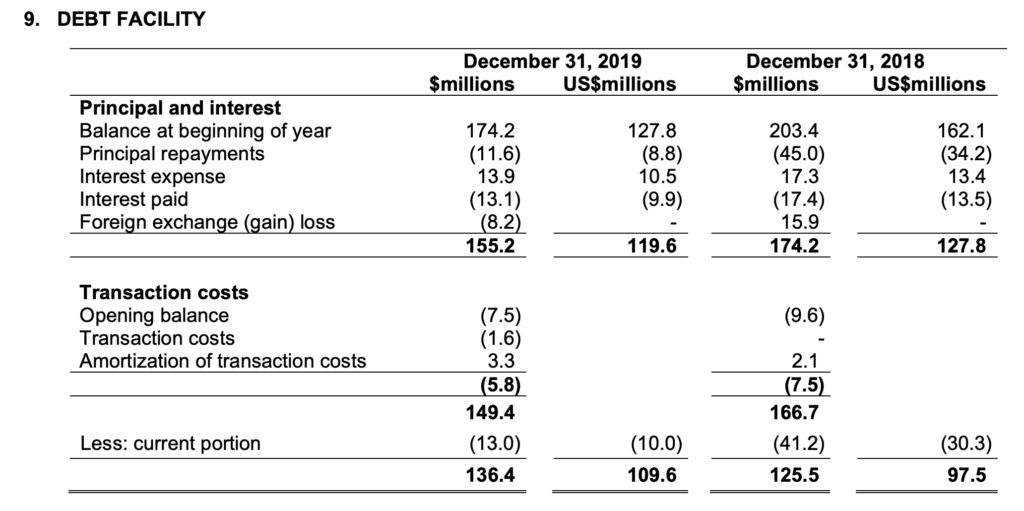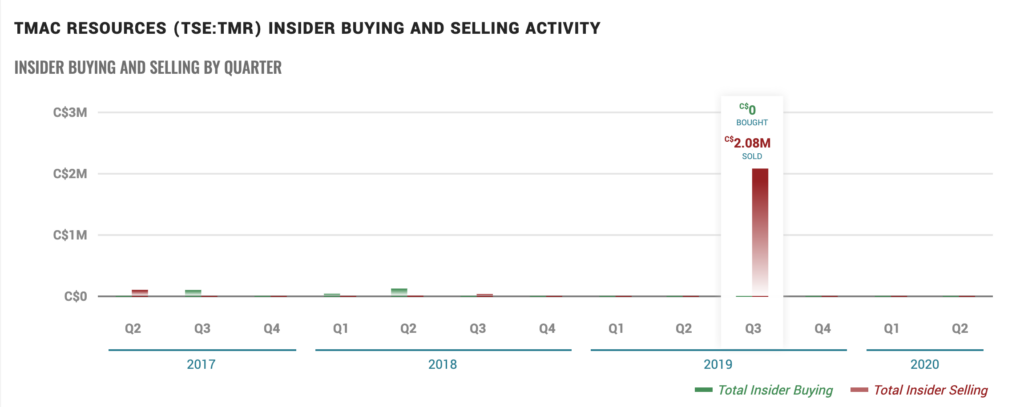Common Stock: TMAC Resources (TSX:TMR)
Current Market Price: $1.55 CAD
Market Capitalization: $201.7 million CAD
**Note: All values in this article are expressed in Canadian Dollars (CAD) unless otherwise noted.

TMAC Resources Stock – Summary of the Company
TMAC Resources is a gold mining company focused on the acquisition, exploration, development, and operation of gold properties in the Nunavut region of Canada. Their keystone property is the Hope Bay property, but they also have other exploration stage properties. TMAC was founded in 2012 and is headquartered in Toronto, Canada.
In May of 2020 SD Gold announced it would acquire 100% of TMAC Resources for $1.75 CAD per share in cash.
Revenue and Cost Analysis
TMAC had sales of $254.8 million in 2019, a significant increase from 2018 sales of $178 million. However, the company had a significant net loss in both years. In 2019, the net loss was $611 million, due mostly to an impairment charge of $674.6 million. In 2018, the company had a net loss of $42.1 million
TMAC Resources – Royalty and Streaming Agreements
The hope bay property has a 2.5% net smelter royalty payable to Maverix Metals. This agreement has several contingencies and repurchase clauses.
Balance Sheet Analysis
TMAC has a weak balance sheet with poor liquidity and high liability levels, including debt.
TMAC Resources – Debt Analysis
The company has total debt outstanding of $155.2 million. The debt carries an interest rate of 6.5% plus the greater of 1% annually or 3-month LIBOR. Repayments are made quarterly and the debt is due to be repaid in full by December 2020.

TMAC Resources Stock – Share Dynamics and Capital Structure
As of year-end 2019 the company had 115 million common shares outstanding. They also have options and warrants outstanding. Fully diluted shares outstanding is around 122.2 million shares.
TMAC has a dilutive capital structure with senior debt. Investors should carefully consider their place in the capital structure and the effects of dilution before investing.
TMAC Resources Stock – Dividends
The company does not pay a dividend.
Management – Skin in the game
Insiders at TMAC have been net sellers of the stock at a price above the current market price. This is generally viewed as a bearish signal for the stock.

TMAC Resources Stock – 3 Metrics to Consider
Debt to Equity Ratio
Total Liabilities/Total Share Holder Equity
$252.1 million/$304.5 million = .82
A debt to equity ratio of .82 indicates that the company uses a mix of debt and equity in its capital structure, with slightly more equity than debt.
Price to Book Ratio
Current Share Price/Book Value per Share.
$1.55/$2.49 = .62
Based on fully diluted shares outstanding, TMAC has a book value per share of $2.49. At the current market price this implies a price to book ratio of .62, meaning the stock currently trades at discount to the book value of the company.
Working Capital Ratio
Current Assets/Current Liabilities
$131.1 million/$53.5 million = 2.5
A working capital ratio of 2.5 typically indicates good short term liquidity. However, I believe TMAC may have a much worse liquidity position than the ratio indicates due to the nature of its current assets, which are comprised mostly of illiquid inventory.
Gold Market – Economic Factors and Competitive Landscape
Gold mining is a highly competitive, capital intensive business. The company will need to compete fiercely for both new projects and capital. However, given the current economic environment of global money printing and zero or negative interest rates, it would appear gold companies are poised to benefit from a strong economic tailwind.
Summary and Conclusions
TMAC has several solid properties but poor operating results and high debt. The company is in the process of being acquired by SD Gold, which may be a better result for shareholder than bankruptcy, which was a real possibility.
Disclaimer
This is not investment advice. Nothing in this analysis should be construed as a recommendation to buy, sell, or otherwise take action related to the security discussed. If I own a position in the security discussed, I will clearly state it.
This is not intended to be a comprehensive analysis and you should not make an investment decision based solely on the information in this analysis. I hope this serves as a useful starting point for a more comprehensive analysis, and hopefully draws attention to aspects of the company that were overlooked or merit further investigation. This is by no means intended to be a complete analysis. Again, this is not investment advice, do your own research.